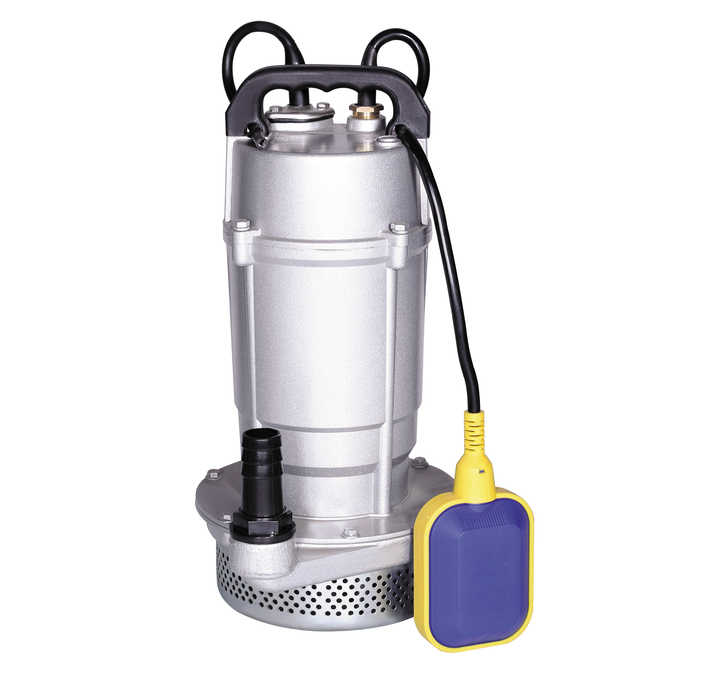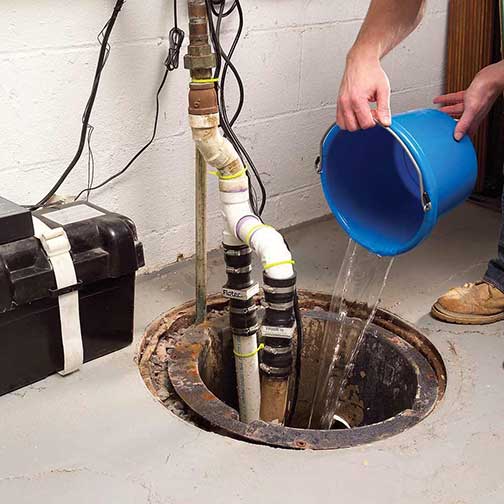Highly-Rated Steps for Taking Care of Your Sump Pump
Highly-Rated Steps for Taking Care of Your Sump Pump
Blog Article
This article which follows relating to Cleaning & Maintenance Tips for Your Home's Sump Pump is particularly interesting. Check it out for your own benefit and figure out what you think about it.

Sump pumps are critical components in numerous homes, particularly in areas susceptible to flooding or excessive wetness. They aid protect against water damages by effectively eliminating excess water from basements or crawl spaces. Nonetheless, like any other appliance, sump pumps call for regular upkeep to ensure they function properly when needed one of the most. Cleaning your sump pump is an essential part of its maintenance, and comprehending how to do it effectively can save you from expensive repair services and prospective disasters.
Intro
Maintaining a clean sump pump is crucial for its appropriate performance and longevity. Neglecting this crucial task can cause blockages, breakdowns, and ultimately, water damages to your residential property. For that reason, finding out just how to cleanse a sump pump is important for home owners that rely on these tools to maintain their basements dry and secured.
Understanding the Sump Pump
Prior to diving right into the cleansing process, it's important to have a fundamental understanding of exactly how a sump pump works. Usually mounted in a pit or container below the cellar flooring, a sump pump contains a number of vital elements, including a pump, a float switch, and a discharge pipe. When water gathers in the pit, the float button triggers the pump, which after that pumps the water out with the discharge pipeline, far from the structure's structure.
Indications of a Dirty Sump Pump
Understanding when your sump pump requires cleansing is critical for protecting against prospective malfunctions. Some typical indications that indicate a filthy sump pump include strange sounds during procedure, lowered water flow, and noticeable debris in the pit. If you notice any one of these symptoms, it's vital to clean your sump pump immediately to stay clear of any type of further issues.
Getting ready for Cleaning
Prior to you start cleaning your sump pump, it's necessary to take some safety precautions. Beginning by turning off the power to the pump to avoid any type of electrical mishaps. Furthermore, wear suitable safety equipment, such as handwear covers and safety glasses, to shield on your own from dust, particles, and possible virus.
Detailed Guide to Cleansing a Sump Pump
Shutting down the Power
Begin by disconnecting the power supply to the sump pump to stop any accidents while cleaning.
Eliminating Particles and Dust
Make use of a container or an inside story to get rid of any noticeable debris, dust, or debris from the sump pit. Dispose of the particles appropriately to avoid it from obstructing the pump or the discharge pipe.
Cleaning up the Pump and Float Switch
Once the pit is clear of debris, meticulously get rid of the pump from the pit. Examine the pump and the float button for any kind of signs of damage or wear. Utilize a soft brush or cloth to clean the surface areas and get rid of any kind of collected crud.
Flushing the System
After cleaning up the pump and float switch, purge the sump pit with tidy water to eliminate any staying dirt or debris. This will certainly assist make certain that the pump operates smoothly and successfully.
Looking For Appropriate Performance
Before re-installing the pump, do a quick examination to ensure that the float button turns on the pump appropriately. Put some water right into the sump pit and observe the pump's operation. If whatever is working correctly, you can rebuild the pump and reconnect the power supply.
Maintenance Tips to Keep Your Sump Pump Clean
Along with regular cleaning, there are a number of maintenance ideas you can comply with to maintain your sump pump in optimum problem:
Verdict
Cleaning your sump pump is a vital aspect of its upkeep and makes sure that it operates properly when you require it the most. By following the steps described in this guide and including regular maintenance into your regimen, you can extend the life expectancy of your sump pump and secure your home from water damages.
6 STEPS ON HOW TO CLEAN A SUMP PUMP PROPERLY
UNDERSTANDING SUMP PUMPS
Your sump pump plays a crucial role in protecting your home by managing and removing excess water. It primarily functions as a “shield”, guarding your basement against the damaging effects of water accumulation. The pump is housed in a sump pit in the lowest part of your basement, and its job is to pump out any water that collects there.
During heavy rainfalls or when snow melts rapidly, water can infiltrate your basement, posing potential risks like flooding, structural damage, and harmful mold growth. Here, the sump pump springs into action, pumping out the intruding water and directing it away from your home.
SAFETY FIRST
Before cleaning, remember to prioritize safety. Disconnect the sump pump from the power source to prevent any accidental electric shocks. Also, wear sturdy gloves to protect your hands from any sharp or dirty components within the pump.
REMOVE THE SUMP PUMP
After ensuring your safety, the next step is to remove the sump pump from its pit. Doing this might require careful maneuvering as you don’t want to damage any pump components. Once removed, clean the sump pit to remove any accumulated debris or sludge.
INSPECT THE PUMP
Inspect the pump for any visible signs of wear or damage. Check the power cord, float switch, and impeller housing. If any components look worn out or damaged, consider replacing them to ensure optimal performance.
CLEAN THE PUMP
Thoroughly clean the pump with warm, soapy water. Make sure to rid it of any dirt, gravel, or other debris that might impede its performance. You can use a toothbrush to clean the small, hard-to-reach parts of the pump.
REINSTALL THE SUMP PUMP
Reinstall the pump into the sump pit Make sure it’s positioned correctly to remove the water effectively Once it’s back in place, reconnect it to the power source TEST THE PUMP
Finally, pour some water into the pit to ensure the pump works correctly. It should start automatically and begin pumping out the water; if it doesn’t, check the power source and the positioning of the pump.
Remember, while cleaning your sump pump is an essential part of home maintenance, hiring a professional plumber for a thorough inspection and cleaning at least once a year is also important. This will ensure that your pump is in optimal condition, ready to protect your home from potential water damage.
BEST PRACTICES FOR CLEANING SUMP PUMP DISCHARGE PIPES
Regular Inspection: Regularly inspect your discharge pipes, especially during heavy rainfall or snowmelt periods. Look for any signs of blockage or damage. Early detection of problems can prevent serious issues down the line. Periodic Cleaning: Over time, sediment and debris can accumulate in the discharge pipes, impeding the flow of water. Regular cleaning helps keep the pipes clear and functioning efficiently. You can use a high-pressure water jet to effectively clean the pipes. Insulation During Winter: In colder climates, discharge pipes can freeze, blocking the outflow of water. Protect your discharge pipes from freezing temperatures by insulating them with foam pipe insulation. This will ensure the sump pump can continue to discharge water even in freezing conditions. Proper Positioning: The discharge pipe should be positioned to direct water away from your home’s foundation. Improper positioning can lead to water seeping back into the basement. Ensure the pipe is long enough and angled correctly. Installation of a Check Valve: A check valve prevents water from flowing back into your sump pit after the pump has pushed it out. Installing a check valve helps maintain the efficiency of your sump pump and reduces the risk of flooding. Minimize Pipe Turns: Every curve or turn in the discharge pipe can decrease the efficiency of water flow. By minimizing turns and bends in your discharge pipe, you can increase the efficiency of your sump pump. https://www.fullspeedplumbing.com/how-to-clean-a-sump-pump-properly9999/

As a fervent person who reads on How To Effectively Clean A Sump Pump, I was thinking sharing that excerpt was beneficial. Do you know about another individual who is truly interested in the niche? Do not hesitate to share it. I take joy in your readership.
Explore Now Report this page